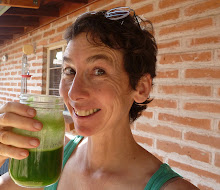Click here for an interesting video lecture on language loss in the "ethnosphere" given by National Geographic Explorer-in-Residence Wade Davis. He says, "language is a flash of the human spirit" and a "watershed of thought", "an ecosystem of spiritual possibilities".
and
Here's the source page for an article I've pasted below about Professor Stephen Neyooxet Greymorning's Accelerated Second Language Acquisition (ASLA) technique. According to Greymorning, ASLA results in indigenous language learning at a much more rapid pace than what he calls standard language teaching/learning methods. I want to find out more about ASLA since the article doesn't describe the method in any detail, and if it really works, then could it not be applied to any language one wants to learn?
Visiting scholar offers exciting new way to learn languages - 19/03/2007
Visiting North American Indigenous scholar Stephen Neyooxet Greymorning has come to Australia to share an astonishing language technique.
Professor Greymorning has developed a way of teaching languages, called Accelerated Second Language Acquisition, so that a total novice can be speaking and understanding a foreign language with conversational ease after as little as 18 hours’ tuition.
He has been successfully using the technique, which he developed after extensively studying how children learn language, with Indigenous Americans.
Now he is visiting Southern Cross University’s Gnibi College of Indigenous Australian Peoples to explore how his methodology might apply toward the teaching of Indigenous Australian languages and to see if there are any language teachers in Australia who are interested in learning the method.
An Arapaho Indian, who teaches in the departments of Native American Studies and Anthropology at the University of Montana, Professor Greymorning is acutely concerned about the rapid rate of loss of Indigenous languages throughout the world.
“In North America there are between 270 and 300 Indigenous languages still spoken but 88 per cent of them are in danger of becoming extinct within 20 years,” Professor Greymorning said.
“It is clear that our young Indigenous people are not having any success in picking up the language of their tribal groups. Even though they are showing interest, standard teaching methods are slow and require a great deal of patience, study and application, which is not very appealing to many people, even if they want to learn a foreign language.
“I spent many years observing and documenting how children learn language, which subsequently led me to develop this new methodology that has been yielding dramatic results.
“The results have been mind-boggling. After a first lesson of just one hour, students can have acquired over 80 useable phrases. After four hours of being taught a language through this new method, most students have been able to speak and understand hundreds of phrases.
“After 12 hours of tuition they are able to have a good conversation with full understanding and to translate from English to the new language and from the new language back to English.
“The technique can be used to teach a single individual or groups of people; to date the largest single group I have worked with has been over 140 people.
“Students achieve rapid success which is highly motivating. An Indigenous community in Quebec, Canada, has reported students at the end of class not wanting to go home. They enjoyed it so much they literally had to be pushed out of the door.
“The lessons are short and I only teach for two hours a week, this is primarily because a different part of the brain is used with this particular methodology. It is not the usual part of the brain that processes new tasks so you don’t have to memorise anything – you learn to understand the new language conceptually.
“I have successfully used this technique with over 40 different language groups in the US and all have had similar results.”
Professor Greymorning, who is now looking to share his knowledge with Indigenous language groups in Australia, reported he had just returned from giving a presentation at the Muurrbay community in Nambucca Heads. Community members there were literally overwhelmed at what they saw and have asked Professor Greymorning to return to train them in how to use his methodology.
“One of the things I hope to accomplish while in Australia is to have language teachers learn about my methodology if they are interested,” Professor Geymorning said.
“The main difficulty is in getting language teachers to not be afraid of trying a radically different approach. People who have been teaching the same way for decades are often highly resistant to change. It seems to invalidate their life’s work and teaching.
“But I would encourage them to keep an open mind and give it a try. The results will be immediate and speak for themselves.”
Professor Greymorning has developed what he calls a ‘language map’ for language teachers which he teaches in a three-to-five day intensive group program.
Anyone who is interested can contact him at Gnibi or email him at neyooxet.greymorning@mso.umt.edu.
Wednesday, April 18, 2007
Language Loss, Language Gain
Labels:
language,
language revitalization
Subscribe to:
Post Comments (Atom)



No comments:
Post a Comment